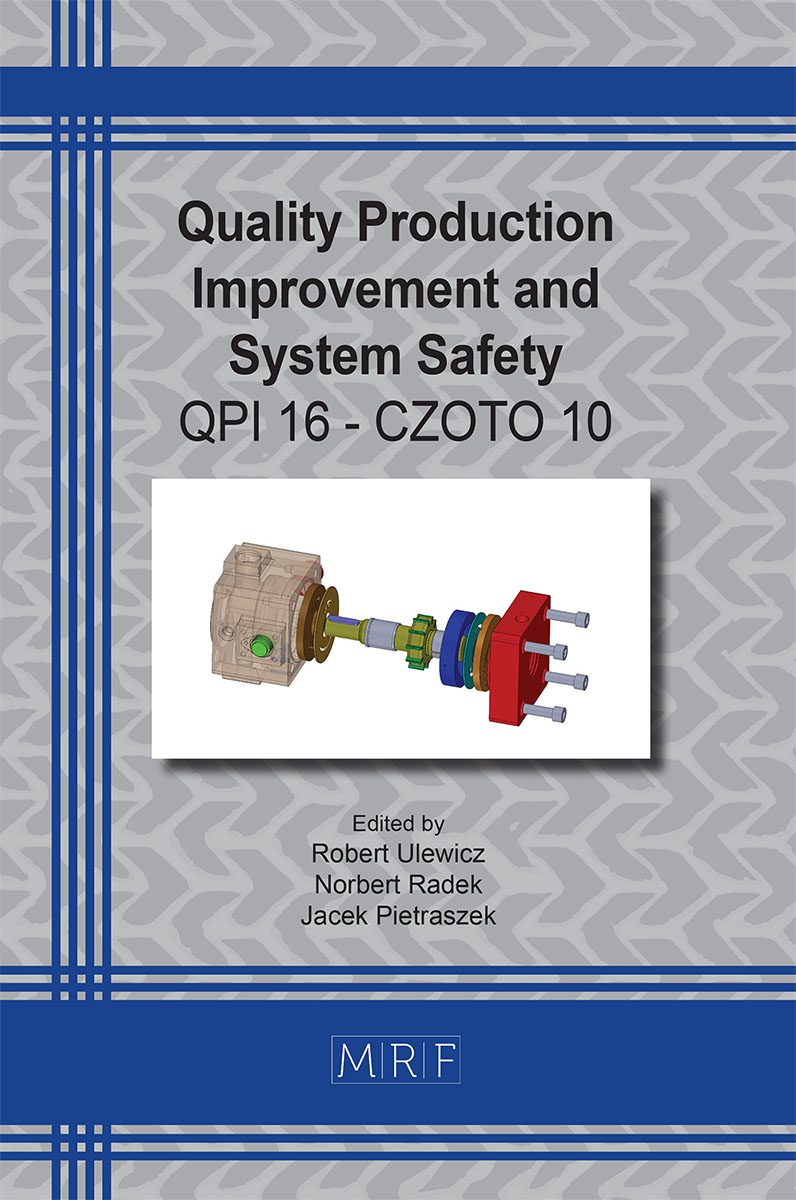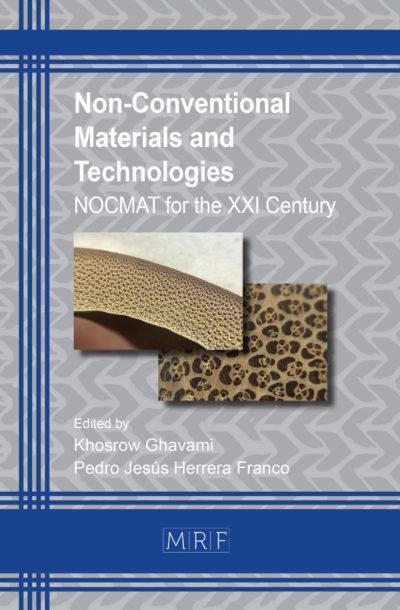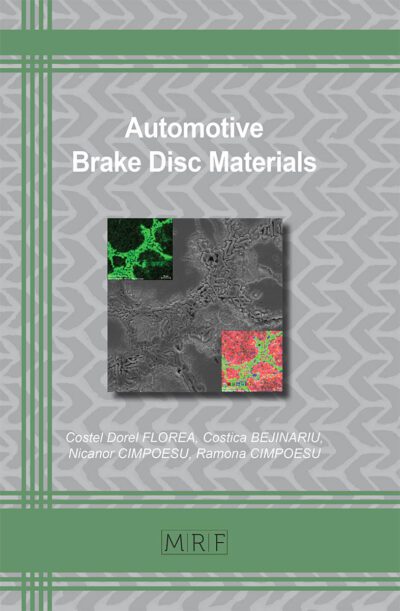Degradation of R35 Steel in 5% NaCl environment at 10°C
LIPIŃSKI Tomasz, ULEWICZ Robert
download PDFAbstract. Carbon steels are willingly used due to the favorable price-performance ratio. They usually do not operate in a non-corrosive state. However, there are products that are hard to protect against corrosion in their entirety. These products include pipes. It is easy to protect the outer layer of the pipe against aggressive environment. The problem with protection is caused by their inner surface. Typically, the working medium is the protective factor, usually filling the internal volume of the pipes completely. It happens, however, that corrosion occurs as a result of long storage of pipes in warehouses, usually in the open air. They are also used as working elements with partial liquid filling. They are then exposed to the environment. One of the corrosive agents is NaCl. The paper presents the results of corrosion rate tests of samples taken from R35 pipes in the environment of a 5% aqueous solution of NaCl at 10oC. The analyzes were carried out based on the determination of mass losses. On the basis of the tests carried out, the relationship between the rate of corrosion and the soaking time of the samples was determined. It was confirmed that on the basis of roughness parameters it is possible to draw conclusions about the suitability of steel for further operation.
Keywords
Steel, Carbon Steel, Corrosion, Corrosion Rate, Profile Roughness
Published online 9/1/2023, 10 pages
Copyright © 2023 by the author(s)
Published under license by Materials Research Forum LLC., Millersville PA, USA
Citation: LIPIŃSKI Tomasz, ULEWICZ Robert, Degradation of R35 Steel in 5% NaCl environment at 10°C, Materials Research Proceedings, Vol. 34, pp 77-86, 2023
DOI: https://doi.org/10.21741/9781644902691-10
The article was published as article 10 of the book Quality Production Improvement and System Safety
![]() Content from this work may be used under the terms of the Creative Commons Attribution 3.0 license. Any further distribution of this work must maintain attribution to the author(s) and the title of the work, journal citation and DOI.
Content from this work may be used under the terms of the Creative Commons Attribution 3.0 license. Any further distribution of this work must maintain attribution to the author(s) and the title of the work, journal citation and DOI.
References
[1] I. Hren et al. Comprehensive analysis of the coated component from a FORD engine. Manuf. Technol. (2021) 464-470. https://doi.org/10.21062/mft.2021.058
[2] R.W. Pechacek. NDT inspection of insulated vessels and piping for interior corrosion and corrosion under insulation. Mater. Perform. 43 (2004) 28-32.
[3] P. Kováčiková et al. The microstructural study of a damaged motorcycle gear wheel. Manuf. Technol. 21 (2021) 83-90. https://doi.org/10.21062/mft.2021.011
[4] Y. Blikharskyy et al. Corrosion fatigue damages of rebars under loading in time. Materials 14 (2021) art.3416. https://doi.org/10.3390/ma14123416
[5] J. Selejdak et al. The evaluation of the use of a device for producing metal elements applied in civil engineering, In: METAL 2014 23rd Int. Conf. Metall. Mater., Ostrava, Tanger, 2014, 1882 1888. ISBN 978-8087294543
[6] M. Askari et al. A comprehensive review on internal corrosion and cracking of oil and gas pipelines. J. Natur. Gas Sci. Eng. 71 (2019) art.102971. https://doi.org/10.1016/j.jngse.2019.102971
[7] N.G. Thompson et al. Cost of corrosion and corrosion maintenance strategies, Corros. Rev. 25 (2007) 247-262. https://doi.org/10.1515/CORRREV.2007.25.3-4.247
[8] G.A. Zhang, Y.F. Cheng. Electrochemical corrosion of X65 pipe steel in oil–water emulsion Corros. Sci. 51 (2009) 901-907. https://doi.org/10.1016/j.corsci.2009.01.020
[9] Y. Xu et al. Exploring the corrosion performances of carbon steel in flowing natural sea water and synthetic sea waters. Corros. Eng. Sci. Technol. 55 (2020) 579-588. https://doi.org/10.1080/1478422X.2020.1765476
[10] J. Owen et al. An experimental and numerical investigation of CO2 corrosion in a rapid expansion pipe geometry. Corros. Sci. 165 (2020) art.108362. https://doi.org/10.1016/j.corsci.2019.108362
[11] L. Markovičová et al. Verification of the probability of elastomers degradation in natural environments. Prod. Eng. Arch. 28 (2022) 279-282. https://doi.org/10.30657/pea.2022.28.34
[12] C.G. Telfer et al. Particle concentration and size effects on the erosion-corrosion of pure metals in aqueous slurries. Tribol. Int. 53 (2012) 35-44. https://doi.org/10.1016/j.triboint.2012.04.010
[13] Y. Xu et al. Understanding the influences of pre-corrosion on the erosion-corrosion performance of pipeline steel. Wear 442 (2020 art.203151. https://doi.org/10.1016/j.wear.2019.203151
[14] Y. Blikharskyy et al. Non-uniform corrosion of steel rebar and its influence on reinforced concrete elements` reliability. Prod. Eng. Arch. 26 (2020) 67-72. https://doi.org/10.30657/pea.2020.26.14
[15] A. Dudek et al. Surface remelting of 316 L+434 L sintered steel: microstructure and corrosion resistance. J. Solid State Electr. 18 (2014) 2973-2981. https://do.org/10.1007/s10008-014-2483-2
[16] M. Scendo et al. Influence of laser treatment on the corrosive resistance of Wc-Cu coating produced by electrospark deposition. Int. J. Electrochem. Sci. 8 (2013) 9264-9277.
[17] T. Lipiński. Corrosion Resistance of 1.4362 Steel in Boiling 65% Nitric Acid. Manuf. Technol. 16 (2016) 1004-1009. https://doi.org/10.21062/ujep/x.2016/a/1213-2489/MT/16/5/1004
[18] H.H. Uhlig, R.W. Revie. Corrosion and corrosion control, 3rd Edition. Wiley, Hoboken, 1985.
[19] D. Kocańda et al. Fatigue Behaviour of S235JR Steel after Surface Frictional-Mechanical Treatment in Corrosive Environment. Key Eng. Mater. 598 (2014) 105-112. https://doi.org/10.4028/www.scientific.net/KEM.598.105
[20] T. Lipiński. Corrosion Effect of 20% NaCl Solution on Basic Carbon Structural S235JR Steel. 16th International Scientific Conference Engineering for Rural Development, In: 16th Int. Sci. Conf. Eng. Rural Develop., Jelgava, 24-26 May 2017, 1069-1074. https://doi.org/10.22616/ERDev2017.16.N225
[21] M. Ladan et al. Corrosion protection of AISI 1018 steel using Co-doped TiO2/polypyrrole nanocomposites in 3.5% NaCl solution. Mater. Chem. Phys. 192 (2017) 361-373. https://doi.org/10.1016/j.matchemphys.2017.01.085
[22] M. Alizadeh, S. Bordbar. The influence of microstructure on the protective properties of the corrosion product layer generated on the welded API X70 steel in chloride solution, Corros. Sci. 70 (2013) 170-179. https://doi.org/10.1016/j.corsci.2013.01.026
[23] T. Lipiński. Roughness of 1.0721 steel after corrosion tests in 20% NaCl. Prod. Eng. Arch. 15 (2017) 27-30. https://doi.org/10.30657/pea.2017.15.07
[24] J.J. Santana Rodriquez, J.E. Gonzalez Gonzalez. Identification and formation of green rust 2 as an atmospheric corrosion product of carbon steel in marine atmospheres. Mater. Corros. 57 (2006) 411-417. https://doi.org/10.1002/maco.200503942
[25] E. Naveen et al. Influence of organic corrosion inhibitors on pickling corrosion behaviour of sinter-forged C45 steel and 2% Cu alloyed C45 steel. J. Alloys Compd. 695 (2017) 3299-3309. https://doi.org/10.1016/j.jallcom.2016.11.133
[26] H. Bohni. Corrosion in reinforced concrete structures. Woodhead, Sawston, 2005. ISBN 978 1845690434
[27] P. Szabracki, T. Lipiński. Effect of aging on the microstructure and the intergranular corrosion resistance of X2CrNiMoN25-7-4 duplex stainless steel. Solid State Phenom. 203-204 (2013) 59-62. https://doi.org/10.4028/www.scientific.net/SSP.203-204.59
[28] P. Szabracki, T. Lipiński. Influence of sigma phase precipitation on the intergranular corrosion resistance of X2CrNiMoN25-7-4 super duplex stainless steel. In: METAL 2014 23rd Int. Conf. Metall. Mater. Ostrava, Tanger, 2014, 476-481. ISBN 978-808729454-3
[29] S.A. Al-Duheisat, A.S. El-Amoush. Effect of deformation conditions on the corrosion behavior of the low alloy structural steel girders. Mater. Des. 89 (2016) 342–347. https://doi.org/10.1016/j.matdes.2015.09.160
[30] R. Chandramouli et al. Deformation, densification and corrosion studies on sintered P/M plain carbon steel preforms. Mater. Des. 28 (2007) 2260-2264. https://doi.org/10.1016/j.matdes.2006.05.018
[31] V. Zatkalíková et al. Corrosion resistance of Cr-Ni-Mo Stainless Steel in Chloride and Fluoride Containing Environment, Manuf. Technol. 16 (2016) 1193-1198. https://doi.org/10.21062/ujep/x.2016/a/1213-2489/MT/16/5/119
[32] R. Chandramouli et al. Deformation, densification and corrosion studies on sintered P/M plain carbon steel preforms, Mater. Des. 28 (2007) 2260-2264. https://doi.org/10.1016/j.matdes.2006.05.018
[33] J. Zhang et al. The inhibition mechanism of imidazoline phosphate inhibitor for Q235 steel in hydrochloric acid medium, Corros. Sci. 53 (2011) 3324-3330. https://doi.org/10.1016/j.corsci.2011.06.008
[34] A. Pradityana et al. Effectiveness of myrmecodia pendans extract as eco-friendly corrosion inhibitor for material API 5L grade B in 3,5% NaCl solution, Adv. Mater. Res. 789 (2013) 484 491. https://doi.org/10.4028/www.scientific.net/AMR.789.484
[353] T. Lipinski, J. Pietraszek. Influence of animal slurry on carbon C35 steel with different microstructure at room temperature. In: 21st Int. Sci. Conf. Eng. Rural Develop., 25-27 May 2022, (2022) 344-350. https://doi.org/10.22616/ERDev.2022.21.TF115
[36] A. Y. El-Etre, M. Abdallah. Natural honey as corrosion inhibitor for metals and alloys. II. C-steel in high saline water. Corros. Sci. 42 (2000) 731-738. https://doi.org/10.1016/S0010 938X(99)00106-7
[37] T. Lipiński. Corrosion rate of the X2CrNiMoN22-5-3 duplex stainless steel annealed at 500°C. Acta Phys. Pol. A 130 (2016) 993-995. https://doi.org/10.12693/APhysPolA.130.993
[38] P. Dillmann et al. Advances in understanding atmospheric corrosion of iron. I. Rust characterisation of 767 ancient ferrous artefacts exposed to indoor atmospheric corrosion. Corros. Sci. 46 (2004) 1401-1429. https://doi.org/10.1016/j.corsci.2003.09.027
[39] D. Klimecka-Tatar et al. The effect of consolidation method on elctrochemical corrosion of polymer bonded Nd-Fe-B type magnetic material, Arch. Metall. Mater. 54 (2009) 247-256.
[40] M. Scendo et al. Influence of laser treatment on the corrosive resistance of WC-Cu coating produced by electrospark deposition, Int. J. Electrochem. Sci. 8 (2013) 9264-9277.
[41] T. Lipinski, J. Pietraszek. Influence of animal slurry on carbon C35 steel with different microstructure at room temperature, Engineering for Rural Development 21 (2022) 344-350. https://doi.org/10.22616/ERDev.2022.21.TF115
[42] Ł.J. Orman. Enhancementof pool boiling heat transfer with pin-fin microstructures, J. Enhanc. Heat Transf. 23 (2016) 137-153. https://doi.org/10.1615/JEnhHeatTransf.2017019452
[43] M. Szczepaniak et al. T. Use of the maximum power point tracking method in a portable lithium-ion solar battery charger, Energies 15 (2022) art.26. https://doi.org/10.3390/en15010026
[44] S. Maleczek et al. Tests of Acid Batteries for Hybrid Energy Storage and Buffering System—A Technical Approach, Energies 15 (2022) art.3514. https://doi.org/10.3390/en15103514
[45] E. Skrzypczak-Pietraszek, J. Pietraszek. Seasonal changes of flavonoid content in Melittis melissophyllum L. (Lamiaceae), Chem. Biodiv. 11 (2014) 562-570. https://doi.org/10.1002/cbdv.201300148
[46] E. Skrzypczak-Pietraszek et al. HPLC-DAD analysis of arbutin produced from hydroquinone in a biotransformation process in Origanum majorana L. shoot culture, Phytochem. Lett. 20 (2017) 443-448. https://doi.org/10.1016/j.phytol.2017.01.009
[47] E. Skrzypczak-Pietraszek et al. Enhanced accumulation of harpagide and 8-O-acetyl-harpagide in Melittis melissophyllum L. agitated shoot cultures analyzed by UPLC-MS/MS. PLoS ONE 13 (2018) art. e0202556. https://doi.org/10.1371/journal.pone.0202556
[48] G. Filo, E. Lisowski, M. Domagała, J. Fabiś-Domagała, H. Momeni. Modelling of pressure pulse generator with the use of a flow control valve and a fuzzy logic controller, AIP Conf. Proc. 2029 (2018) art.20015. https://doi.org/10.1063/1.5066477
[49] M. Domagala et al. CFD Estimation of a Resistance Coefficient for an Egg-Shaped Geometric Dome, Appl. Sci. 12 (2022) art.10780. https://doi.org/10.3390/app122110780
[50] M. Domagala et al. The Influence of Oil Contamination on Flow Control Valve Operation, Mater. Res. Proc. 24 (2022) 1-8. https://doi.org/10.21741/9781644902059-1
[51] N. Radek et al. Technology and application of anti-graffiti coating systems for rolling stock, METAL 2019 28th Int. Conf. Metall. Mater. (2019) 1127-1132. ISBN 978-8087294925
[52] N. Radek et al. Influence of laser texturing on tribological properties of DLC coatings, Prod. Eng. Arch. 27 (2021) 119-123. https://doi.org/10.30657/pea.2021.27.15
[53] N. Radek et al. Formation of coatings with technologies using concentrated energy stream, Prod. Eng. Arch. 28 (2022) 117-122. https://doi.org/10.30657/pea.2022.28.13
[54] N. Radek et al. The WC-Co electrospark alloying coatings modified by laser treatment, Powder Metall. Met. Ceram. 47 (2008) 197-201. https://doi.org/10.1007/s11106-008-9005-7
[55] N. Radek et al. Laser Processing of WC-Co Coatings, Mater. Res. Proc. 24 (2022) 34-38. https:10.21741/9781644902059-6
[56] P. Kurp, H. Danielewski Metal expansion joints manufacturing by a mechanically assisted laser forming hybrid method – concept, Technical Transactions 119 (2022) art.e2022008. https://doi.org/10.37705/TechTrans/e2022008
[57] R. Dwornicka, J. Pietraszek. The outline of the expert system for the design of experiment, Prod. Eng. Arch. 20 (2018) 43-48. https://doi.org/10.30657/pea.2018.20.09
[58] J. Pietraszek, N. Radek, A.V. Goroshko. Challenges for the DOE methodology related to the introduction of Industry 4.0. Production Engineering Archives 26 (2020) 190-194. https://doi.org/10.30657/pea.2020.26.33
[59] B. Jasiewicz et al. Inter-observer and intra-observer reliability in the radiographic measurements of paediatric forefoot alignment, Foot Ankle Surg. 27 (2021) 371-376. https://doi.org/10.1016/j.fas.2020.04.015
[60] J. Pietraszek. The modified sequential-binary approach for fuzzy operations on correlated assessments, LNAI 7894 (2013) 353-364. https://doi.org/10.1007/978-3-642-38658-9_32
[61] J. Pietraszek et al. Non-parametric assessment of the uncertainty in the analysis of the airfoil blade traces, METAL 2017 26th Int. Conf. Metall. Mater. (2017) 1412-1418. ISBN 978-8087294796
[62] A. Deja et al. Analysis and assessment of environmental threats in maritime transport, Transp. Res. Procedia 55 (2021) 1073-1080. https://doi.org/10.1016/j.trpro.2021.07.078
[63] J. Fabiś-Domagała, G. Filo, H. Momeni, M. Domagała. Instruments of identification of hydraulic components potential failures, MATEC Web of Conf. 183 (2018) art.03008. https://doi.org/10.1051/matecconf/201818303008
[64] J. Fabis-Domagala et al. A concept of risk prioritization in FMEA analysis for fluid power systems, Energies 14 (2021) art. 6482. https://doi.org/10.3390/en14206482
[65] J. Fabis-Domagala, M. Domagala. A Concept of Risk Prioritization in FMEA of Fluid Power Components, Energies 15 (2022) art.6180. https://doi.org/10.3390/en15176180
[66] D. Klimecka-Tatar. Context of production engineering in management model of Value Stream Flow according to manufacturing industry, Prod. Eng. Arch. 21 (2018) 32-35. https://doi.org/10.30657/pea.2018.21.07
[67] N. Baryshnikova et al. Management approach on food export expansion in the conditions of limited internal demand, Pol. J. Manag. Stud. 21 (2020) 101-114. https://doi.org/10.17512/pjms.2020.21.2.08
[68] PN-89/H 84023/07 Specific application steels. Steels for tubing. Grades.
[69] PN-80/H-74219 Hot rolled seamless steel tubes for general use.
[70] PN EN ISO 3651-1, Determination of resistance to intergranular corrosion of stainless steels. Part 1: Austenitic and ferritic-austenitic (duplex) stainless steels. Corrosion test in nitric acid medium by measurement of loss in mass (Huey test).













